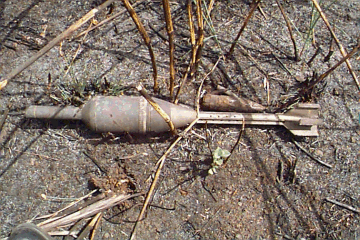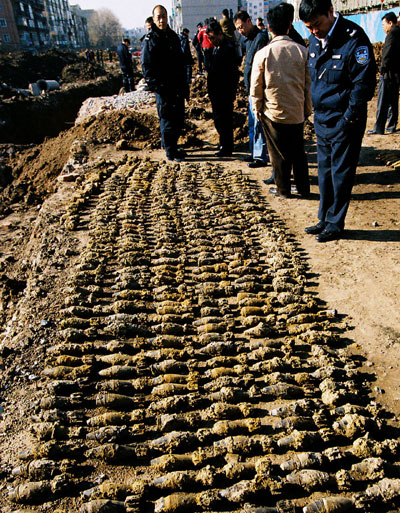UXO is the informal acronym of Unexploded ordnance, where Munitions and Explosives of Concern (MEC) is the preferred nomenclature. Both terms are set to represent any sort of explosives that did not detonate when they were meant to, and thus still pose a threat to passers-by many years after their employment. Bombs, grenades, artillery shells, missiles, and mines could all be examples of MECs, and their presence is an increasing threat worldwide.
The main issue with MECs is that the weapons are passive and not intending to harm anyone. Over time, the charges and detonation instruments may have eroded or deteriorated inside the bomb, possibly resulting in an explosion with even the most sensitive of touches. Civilians may not realize they are disturbing and MEC, or may think it inactive and a true dud, but interaction with unexploded ordnance usually results in harm. Another problem is that the locating and removal of MECs is very expensive and difficult.
MECs are present primarily on the old battlefields throughout the world–with things as old as shells from the First Word War still posing a threat to the French countryside–but can also be found on military training and testing facilities. Throughout the U.S.A., there are many thousands of inactive military ranges that are believed to be home to thousands of MECs, which display “imminent and substantial” risk to public health and would cost an estimated $14 billion to remove, according to the US Environment Protection Agency (http://www.epa.gov/fedfac/documents/hazard_assess_wrkgrp.htm).
The largest contributor to modern MECs are cluster bombs, which are usually employed en masse and deliver thousands of bomblets over a wide target area. The most common submunition-based weapons have been found to have around a 5% dud rate, creating the potential for a bombed region to still hold thousands of live warheads.
 –An MEC that blends in with its surroundings.
–An MEC that blends in with its surroundings.
 –Recovered MECs.
–Recovered MECs.
Image sources: http://www.wainwright.army.mil/safety/Winter%20Safety%20FY07/images/90%20mm%20dud%20uxo.gif, http://www.chinadaily.com.cn/english/doc/2005-11/09/xin_3011020911475223143638.jpg
Next: IEDs.
Back to Issues of Morality and Violence.
Back to the bomb main.
